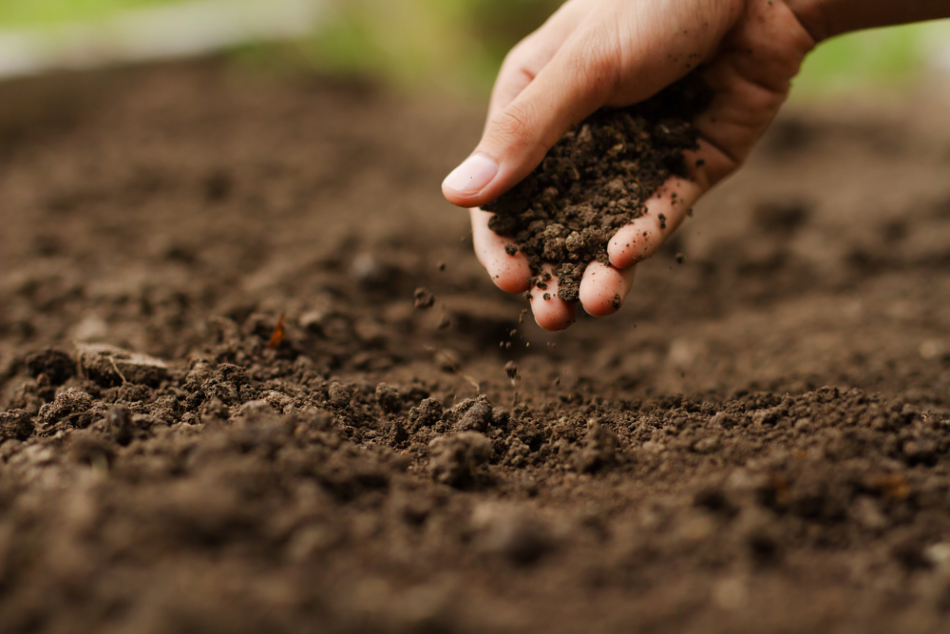
Image Credit: Piyaset/Shutterstock.com
Researchers from Texas A&M University are developing a promising sustainable, adobe-like building material that can be created from local soil and extruded from a 3D printer to make a robust structure, according to a new report recently presented at the American Chemical Society Fall 2020 Virtual Meeting & Expo.
There are two huge challenges currently facing the construction industry: the need for more sustainable infrastructure and the need to fix deteriorating infrastructure. For more than a century, concrete has been the go-to construction material for buildings and infrastructure. Unfortunately, the production of concrete has an extensive carbon footprint, as well as a high degree of waste and a final product that cannot be recycled.
To address the sustainability issues facing the construction industry, some scientists have been researching solutions related to additive manufacturing, or 3D printing, which involves extruding subsequent layers of a quickly-solidifying material. There have already been numerous cutting-edge construction projects that have shown the potential benefits of adopting additive manufacturing on a large scale.
How can Soil be Used in 3D Printing?
While additive manufacturing can reduce waste in construction, the materials used must be sustainable to reduce the overall environmental impact of the industry significantly. The production of concrete accounts for up to 7 to 8% of global carbon dioxide emissions.
Soil is typically categorized by layers of materials, starting with the top layer of organic material and ending at hard bedrock. Clay sits just under the organic layer, and this material gives soil malleable quality, a characteristic the study team leveraged in their research.
The study team started by gathering soil specimens from a Texas backyard. They then modified the soil using an eco-friendly additive that acted as a binder so that the material could be readily squeezed out through a 3D printer. Since soils differ significantly by location, the team focused on making a universal chemical "toolkit" capable of transforming any soil into a useful building material. The team was able to make a material that did not set too quickly to avoid clogging, or too slowly to allow for the quick solidification of subsequent layers.
After they decided on a formulation, the team constructed small-scale test constructions made from 2-inch square cubes. This exercise allowed the team to learn how the material acted when stacked into layers.
Next, the study team worked to create structures that were adequately load-bearing, meaning structures that could withstand the addition of many layers and the inclusion of construction materials such as rebar. Load-bearing capability is just as essential to the function of a structure as its capability to remain intact.
To help with load-bearing ability, the research team bolstered their soil mixture by "zippering" the surface of the extruded material to keep it from soaking up water, which would compromise a structure's integrity. The scientists said they spent a great deal of time formulating a sustainable chemical zipper that did not have toxicity issues. One of the main benefits of making structures with 3D printing technology is that it enables recycling after their life cycle.
Find out more: 3D Printers and 3D Printing Equipment, Materials and Accessories
The Benefits of 3D Printing Local Soil in the Construction Industry
With the chemistry and technique that the team developed, they were able to make structures capable of holding double the maximum weight that could be held by unmodified clay.
The team said they plan to continue this line of research by boosting load-bearing abilities. This will involve scaling up test structures to settle on a viable replacement for concrete. Furthermore, the team is collecting information to view if their 3D-printed structures are as sustainable as they hope, particularly concerning carbon emissions and the potential for recycling.
For millennia, humans have used locally sourced materials for building. The relatively recent shift to, and then reliance on, concrete has raised many environmental issues. Researchers behind the new study said they were looking to reverse this shift by developing an eco-friendly concrete replacement made from local materials.
A benefit to using local material in construction is that they would not have to be fabricated and then transported to the construction site, lowering both costs and ecological impacts. While sourcing enough useful earth in an urban habitat can be challenging, the overall environmental impact of extracting soil and moving it to an urban site is categorically more sustainable than using concrete.
Furthermore, the restrictive spaces found in urban environments make 3D printing an attractive option, as the technology makes it possible for custom structures that are made to suit the surrounding architecture. Additive manufacturing is also well-suited to fabricating attractive, low-cost housing, and the study team said their local soil system could be applied to construction on the Moon or even other planets.
The study team said they want to explore how their technology could be applied to use beyond Earth as soon as they have proven their concept.
References and Further Reading
American Chemical Society. 3D printing ‘greener’ buildings using local soil. [Online] Available at: https://www.acs.org/content/acs/en/pressroom/newsreleases/2020/august/3d-printing-greener-buildings-using-local-soil.html (Accessed on 22 September 2020).
Inverse. New discovery may shape the future of construction on Earth and Mars. [Online] Available at: https://www.inverse.com/innovation/building-local-soil (Accessed on 22 September 2020).
Disclaimer: The views expressed here are those of the author expressed in their private capacity and do not necessarily represent the views of AZoM.com Limited T/A AZoNetwork the owner and operator of this website. This disclaimer forms part of the Terms and conditions of use of this website.